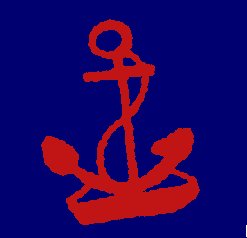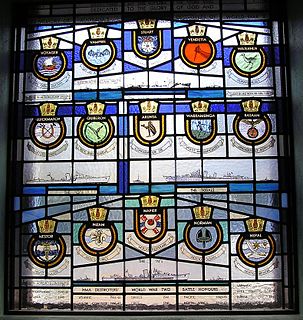 W
WThe history of the Royal Australian Navy traces the development of the Royal Australian Navy (RAN) from the colonisation of Australia by the British in 1788. Until 1859, vessels of the Royal Navy made frequent trips to the new colonies. In 1859, the Australia Squadron was formed as a separate squadron and remained in Australia until 1913. Until Federation, five of the six Australian colonies operated their own colonial naval force, which formed on 1 March 1901 the Australian Navy's (AN) Commonwealth Naval Force which received Royal patronage in July 1911 and was from that time referred to as Royal Australian Navy (RAN). On 4 October 1913 the new replacement fleet for the foundation fleet of 1901 steamed through Sydney Heads for the first time.
 W
WShips and units of the Royal Australian Navy have received numerous battle honours throughout the navy's history.
 W
WFollowing World War II the Royal Australian Navy (RAN) was required to clear naval mines from the waters around Australia and New Guinea. Minesweeping in these areas began in December 1945 and was completed in August 1948. One ship, the Bathurst class corvette HMAS Warrnambool, was sunk during these operations.
 W
WNaval Stores is a heritage-listed storehouse at 34 Amesbury Street, Kangaroo Point, Queensland, Australia. It was built from 1886 to 1900s. It is also known as Naval Brigade Stores and Naval Depot. It was added to the Queensland Heritage Register on 21 October 1992.
 W
WRockingham Naval Memorial Park is a military memorial in the City of Rockingham, Western Australia, dedicated to the Royal Australian Navy. It contains a number of commemorative plaques, a 110 mm (4.5 in) gun turret from HMAS Derwent and a submarine fin from HMAS Orion.
 W
WThe Royal Australian Naval Bridging Train was a unique unit of the Royal Australian Navy. It was active only during the First World War, where it served in the Gallipoli and the Sinai and Palestine Campaigns. The Train was formed in February 1915 and stood down in May 1917. Throughout its existence, it was composed of Royal Australian Naval Reservists under the command of Lieutenant Commander Leighton Bracegirdle. Normally under the command of the British IX Corps, the Train also supported the I ANZAC Corps and Imperial Camel Corps in the defence of the Suez Canal.They were the only Australian naval unit serving in a European theatre of war. They were therefore bent on proving, both to the Royal Navy and to the British Army, that they could overcome any difficulties.
 W
WThe Scrap Iron Flotilla was an Australian destroyer group that operated in the Mediterranean and Pacific during World War II. The name scrap iron flotilla was bestowed upon the group by Nazi Propaganda Minister Joseph Goebbels.